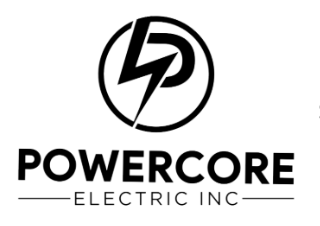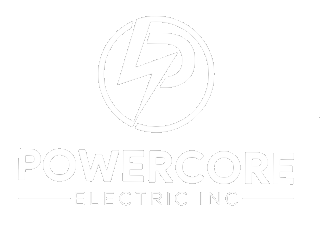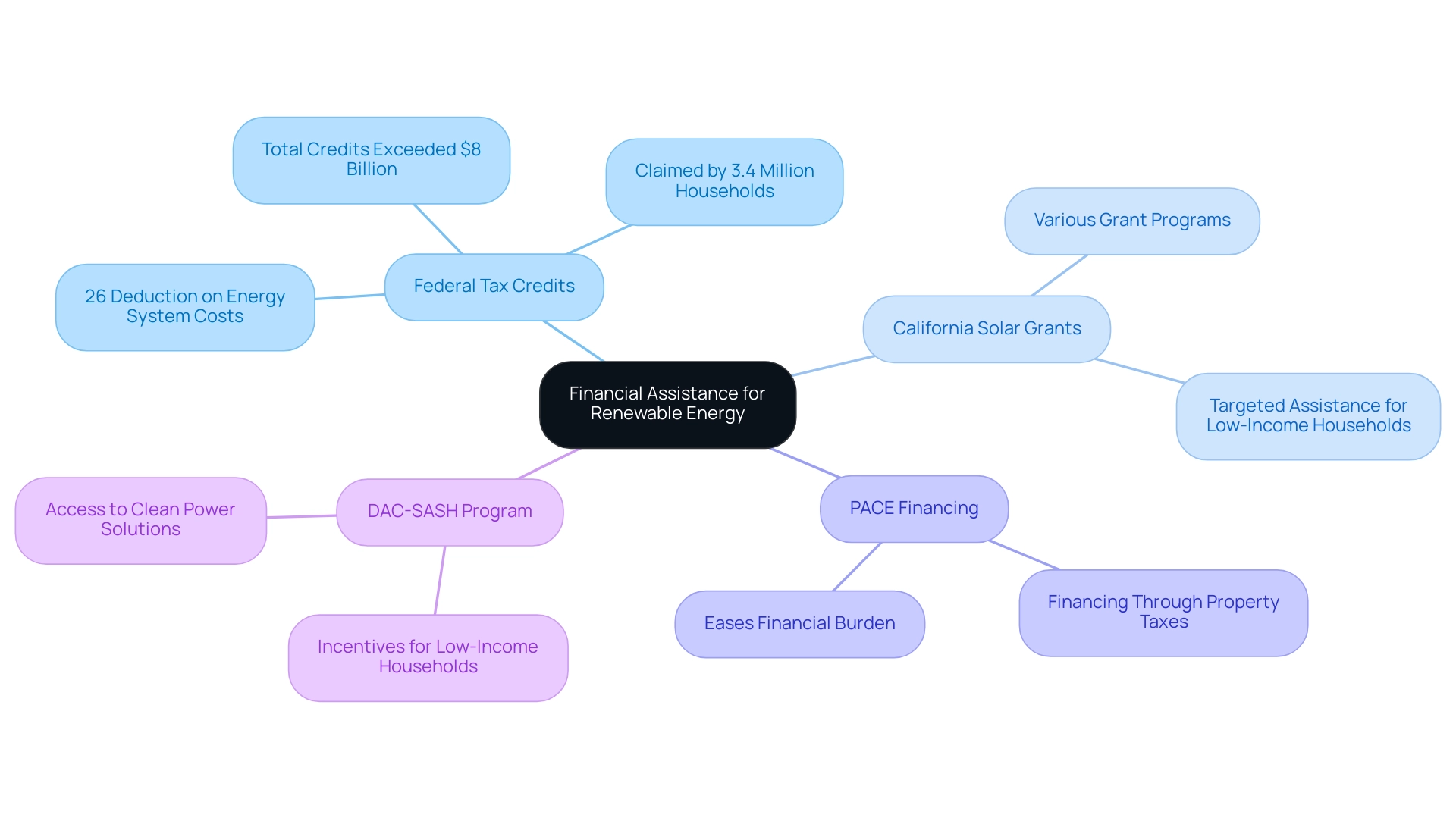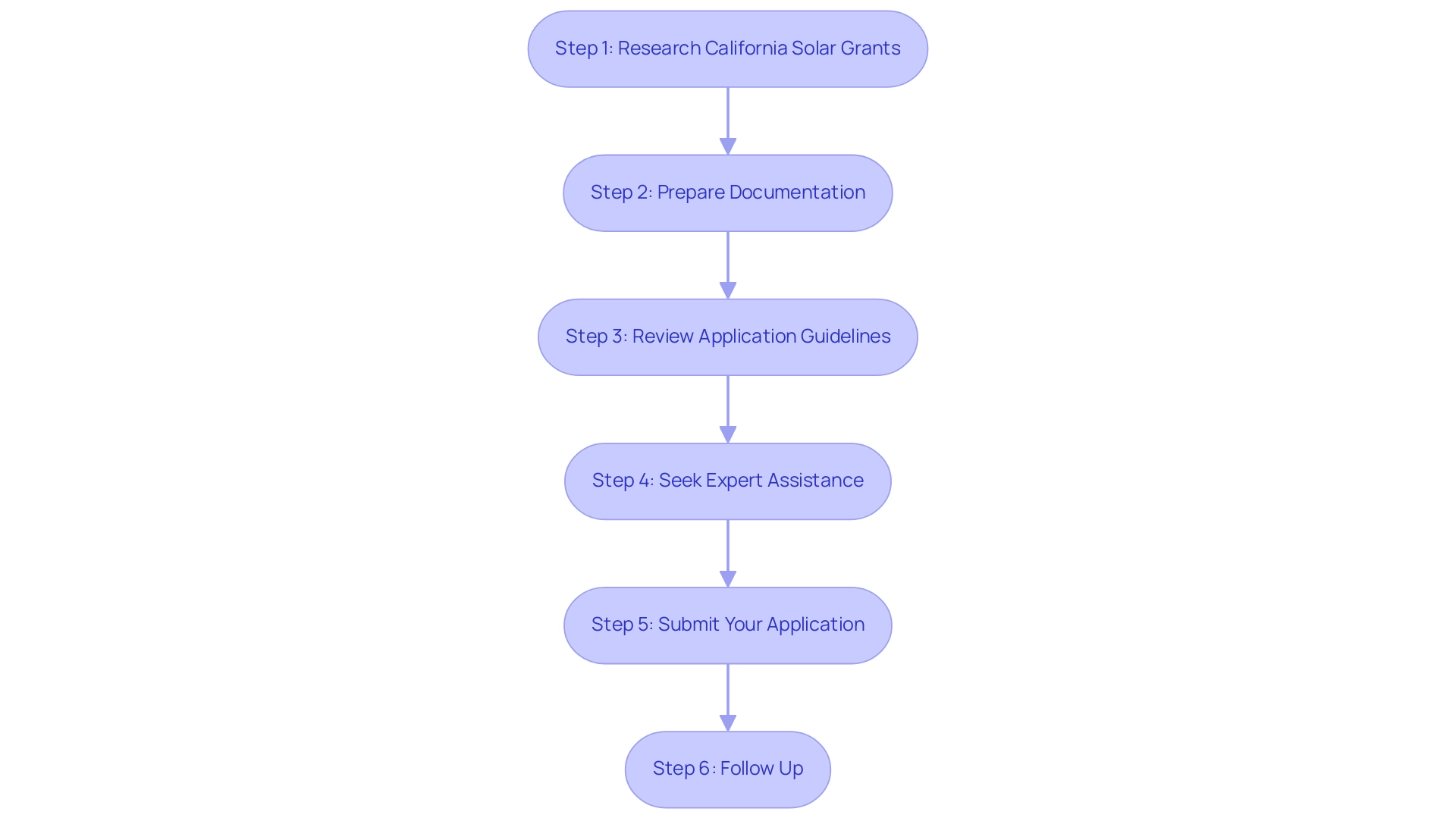Introduction
As the sun shines brightly over California, homeowners are increasingly looking to harness its power through solar energy. The journey to going solar, however, can be a bit overwhelming with the ever-changing landscape of incentives, rebates, and programs available.
Fortunately, there are numerous opportunities for residents, particularly in areas like Long Beach, to take advantage of financial assistance that makes the transition to clean energy not only feasible but also beneficial. From the federal solar tax credit to local utility incentives, understanding the options can lead to significant savings and a greener footprint.
This article delves into the current state of solar incentives in California, explores the various financial assistance programs, and provides insights into maximizing benefits through initiatives like Net Energy Metering. With the right information and support, homeowners can embark on a rewarding solar journey that enhances both their homes and the environment.
The Current State of Solar Incentives in California
The state has long been a leader in solar energy, but it’s crucial to acknowledge that the framework of solar support is changing. Historically, California solar grants from the California Solar Initiative (CSI) have offered generous rebates, but there has been a noticeable decline in these benefits in recent years. However, homeowners, especially renters in Long Beach, can still take advantage of various programs offered by local utilities, such as California solar grants, and state initiatives.
For instance, the DAC-SASH program particularly serves low-income households in underprivileged communities, providing up to $3 per watt in benefits that could possibly cover the whole installation expense. This is a fantastic opportunity for eligible homeowners to take advantage of California solar grants to invest in renewable energy and reduce their bills.
Along with these incentives, Powercore Electric provides complimentary personalized estimates for your energy needs, encouraging homeowners to seek help in exploring their choices. Their expertise in energy solutions ensures that you can find the best way to reduce your carbon footprint while enjoying financial savings. Furthermore, the Net Energy Metering (NEM) program continues to be a vital benefit, allowing homeowners to earn credits for the surplus power they produce.
This means that not only can photovoltaic panels help lower your monthly energy costs, but they can also contribute to your savings when you generate surplus energy.
Moreover, it’s crucial to be aware of the property tax implications of installing photovoltaic panels in relation to California solar grants. In California, photovoltaic installations are excluded from property tax assessments, allowing homeowners to enjoy the benefits of increased property value without the worry of higher taxes. However, this motivation is scheduled to end in 2025, making it essential for homeowners to act quickly if they are contemplating the installation of renewable energy systems to take advantage of California solar grants.
As Ross Williams, owner of HES Solar, pointed out, “We sold 600 deals in the first quarter of the year and in the month of May we made one deal. That’s how dramatic it was; the disruption was so insane.” This emphasizes the significance of remaining updated on alterations in energy incentives and California solar grants.
By doing so, you can maximize your investment and ensure that you make the most informed decision regarding your energy installation. Keep in mind, adopting renewable power not only promotes independence and sustainability but also results in long-term savings on your utility bills. So, why wait?
Reach out to Powercore Electric for your complimentary customized assessment today and discover the possibilities of renewable resources for your Long Beach residence!
Exploring Financial Assistance: Tax Credits, Rebates, and Programs
If you’re a Long Beach tenant seeking to access the advantages of renewable power, you’re fortunate! California provides various financial assistance programs, such as California solar grants, aimed at making the shift to clean power more affordable. A standout option is the federal tax credit for renewable energy, allowing you to deduct a generous 26% of your energy system costs from your federal taxes.
Recent information from the IRS indicates that over 3.4 million American households have claimed more than $8 billion in clean power credits, highlighting the substantial financial effect of these benefits. Remember, this percentage is set to decrease in the coming years, so it’s wise to act quickly! On the state level, various California solar grants can help further ease your financial burden. Programs like Property Assessed Clean Energy (PACE) enable you to finance your energy installation through your property taxes, making it more manageable.
Furthermore, the Disadvantaged Communities – Single Family Solar Homes (DAC-SASH) program offers incentives particularly for low-income households, guaranteeing that everyone has access to clean power solutions.
In addition, the installation of 3 GW of new storage systems alongside photovoltaic technology in 2023 illustrates the increasing trend in renewable sources adoption. When examining renewable power, it’s also crucial to investigate the functionality of panels that convert sunlight into electricity, as well as the significance of regular cleaning services to uphold their efficiency. Furthermore, Tesla home chargers are an excellent choice for individuals seeking to charge their electric vehicles using renewable sources, further improving your eco-conscious lifestyle.
By investigating these alternatives, you can greatly decrease your initial expenditure on renewable power, benefiting both your finances and the environment. This dedication to renewable resources is also reflected by significant U.S. companies, such as Meta, Amazon, Google, Apple, and Walmart, all investing heavily in photovoltaic systems and storage, showcasing a robust corporate commitment to a sustainable future.
Understanding the Net Energy Metering (NEM) Program
Net Power Metering (NPM) is a remarkable chance for renewable power system owners to optimize their savings. By allowing you to earn credits for any excess electricity generated by your system and sent back to the grid, NEM acts like a savings account. Picture this: on those bright, sunny days when your photovoltaic panels are functioning diligently, the additional power you generate can be sold back to your utility provider.
Those credits can then be used when your system isn’t generating as much power, especially during the winter months when sunlight is scarce. To fully leverage NEM and government renewable energy programs, homeowners should follow these steps:
- Research your utility’s specific NEM policies and terms to understand how to navigate the process effectively.
- Consider consulting with a renewable energy expert to evaluate your system’s performance and potential savings.
- Stay informed about proposed policy changes that could affect compensation rates for customers utilizing solar power.
The Public Utilities Commission estimates that solar-plus-storage systems have a payback period of about 9 years, while NBT customers may recover their costs within 6 to 7 years—timely action is essential! With recent proposed policy changes potentially impacting compensation rates for renewable energy customers, existing users should take full advantage of the current net metering credits before any shifts occur.
Moreover, with the California Public Utilities Commission introducing the new NEM 3.0 regulation, future net metering benefits could change. But don’t worry—those who have already installed renewable energy will be grandfathered into the previous NEM policy, giving them a significant financial advantage over new customers who may face higher costs. Comprehending how photovoltaic panels function is also essential; they transform sunlight into power through photovoltaic cells, which can greatly decrease your utility bills.
Don’t miss out on these valuable benefits as you move towards a more eco-friendly and financially viable solution!
Exploring Local Utility Incentives
If you’re a property owner in the Golden State seeking to adopt renewable energy, California solar grants can be a great opportunity for you! Powercore Electric, your reliable local specialist, provides customized and sustainable energy solutions throughout Northern and Southern regions, dedicated to optimizing your savings and efficiency. Many local utility firms, including Pacific Gas and Electric (PG&E) and Southern California Edison (SCE), offer excellent benefits, such as California solar grants, to make your solar journey smoother and more affordable.
For example, PG&E provides a range of rebates designed to lower your initial expenses, while SCE has performance-based rewards that benefit you according to the energy you generate. It’s essential to contact your utility provider directly to discover what benefits are currently available and how to navigate the application process. These benefits can vary, so remaining knowledgeable is essential to optimizing your energy investment.
As Ross Williams, owner of HES Solar, noted, ‘We sold 600 deals in the first quarter of the year and in the month of May we made one deal. That’s how dramatic it was, the disruption was so insane.’ This underscores the swiftly evolving landscape of energy benefits, making it even more essential to stay current.
Keep in mind that installing a 5 kW system will typically cost between $9,820 to $13,286, giving you a good idea of potential expenses. While the state no longer offers net metering, it provides net billing for customers of PG&E, SCE, and SDG&E, allowing you to receive credits for any excess electricity sent to the grid. Furthermore, California’s New Solar Homes Partnership program provides an abundance of information on California solar grants and incentives for new residences, ensuring that as many homeowners as possible can gain from the state’s initiative towards renewable sources.
With the collective efforts of publicly owned utilities investing over $700 million to install renewable energy capacity, now is an excellent time to explore these opportunities with Powercore Electric. Contact Powercore Electric for your free quote today and start your journey towards clean, efficient energy.
Navigating the Application Process for Solar Grants
Navigating the world of renewable energy grants and incentives might seem a bit daunting at first, but don’t fret! With a few straightforward steps, you can simplify the process and make it feel more manageable. Begin by collecting all the necessary documentation you’ll require, such as proof of income, information about your property ownership, and details on your energy installation.
Many grants come with specific requirements, so it’s crucial to carefully review the application guidelines to ensure you have everything in order. In fact, 60% of respondents reported awards from Federal government funding sources, showcasing a significant potential for success when applying for these grants.
Step-by-Step Guide to Applying for Solar Grants:
- Research California Solar Grants: Begin by exploring local and federal grant options available in California for panel installations.
- Prepare Documentation: Gather essential papers including proof of income, property ownership details, and installation specifics.
- Review Application Guidelines: Carefully read through the requirements for each grant to ensure you meet all criteria.
- Seek Expert Assistance: Consider teaming up with a local installer who has a knack for the application process; their expertise can be invaluable when it comes to handling paperwork and submissions.
- Submit Your Application: Follow the guidelines to submit your application, ensuring all documentation is complete.
- Follow Up: Don’t hesitate to follow up on your application status! Being proactive and asking questions if something isn’t clear can make all the difference.
As Ellen C. Mowrer, CEO of GrantStation, emphasizes, “At GrantStation, we help you to keep your organization financially healthy through assistance in developing a strong grantseeking strategy.” This insight underscores the importance of informed guidance in navigating the grant landscape.
Additionally, participating in community energy programs can not only reduce expenses but also contribute to cleaning up the grid, boosting the local economy, and creating new jobs. This further motivates homeowners to actively pursue grants. Remember, this little bit of effort can lead to a much smoother experience and help you access funding more quickly, enabling you to take a significant step towards a sustainable home.
Understanding Solar Panel Functionality and Costs: Solar panels work by converting sunlight into electricity through photovoltaic cells. The expenses of photovoltaic panel systems can fluctuate depending on aspects like installation size, kind of panels, and regional benefits. Homeowners can frequently reduce installation expenses through different state and federal incentives, such as California solar grants, making renewable power a financially viable choice.
It’s essential to evaluate these costs and benefits when considering panel installation.
Long-Term Benefits of Solar Investments
Investing in renewable power isn’t merely a trend; it’s a wise long-term choice that provides numerous advantages for environmentally aware homeowners. Numerous case studies demonstrate how homes fitted with photovoltaic panels can significantly boost property values. For example, a household in Southern California achieved over 70% savings on energy expenses after installing a water heating system, showcasing the financial benefits of adopting renewable energy.
Additionally, research indicates that photovoltaic installations consistently enhance property values, regardless of market fluctuations, with homes featuring these systems constructed, on average, 1.8 years after their non-photovoltaic counterparts, reflecting a growing trend toward sustainable living. As Ana Almerini, our Marketing & Communications Manager, emphasizes,
With a Master’s in Climate and Society, I help convey the benefits of photovoltaic systems to homeowners, highlighting that these installations not only save money but also add lasting value to their properties.
The financial motivations associated with renewable sources are compelling.
Homeowners can enjoy substantial long-term savings, especially as mortgage rates climb back to around 6.6%, while potentially losing out on $6.2 billion in refinancing savings. Solar power also provides a buffer against rising utility rates, offering a degree of independence that is increasingly vital in today’s economy. Furthermore, by decreasing dependence on fossil fuels, photovoltaic power significantly lowers carbon footprints, resonating with the values of eco-conscious homeowners.
A study on heat pump adoption also reveals that clean power technologies can enhance real estate values, underscoring the wise investment that renewable energy represents. For instance, passive power collection designs, such as homes with large south-facing windows, capture and retain sunlight during the winter months, significantly lowering expenses. Additionally, sunlight-powered air heaters can decrease a household’s carbon output by 20 to 40 percent, further illustrating the diverse applications of renewable energy.
With all these long-term benefits, it’s clear that investing in solar solutions, particularly when supported by California solar grants and local experts like Powercore Electric who prioritize quality craftsmanship and sustainable options tailored for California communities, is a decision that pays dividends well into the future. Our satisfied customers often share their positive experiences, highlighting how our services have transformed their homes and energy consumption for the better.
Conclusion
Embracing solar energy in California can seem daunting, but understanding the various incentives and programs available can make the transition smoother and more rewarding. Homeowners in areas like Long Beach have access to a wealth of financial assistance options, from federal tax credits to local utility rebates, that can significantly reduce installation costs and enhance long-term savings. Programs such as the DAC-SASH are tailored to support low-income households, while Net Energy Metering allows homeowners to earn credits for excess energy produced, further maximizing their investment.
Navigating the application process for grants and incentives may feel overwhelming, but a step-by-step approach can simplify things. Gathering necessary documentation, researching available grants, and seeking expert assistance are crucial steps in ensuring a successful application. Moreover, staying informed about the evolving landscape of solar incentives will empower homeowners to make educated decisions, optimizing both savings and environmental impact.
Ultimately, investing in solar energy is not just about reducing utility bills; it’s an opportunity to increase property value and contribute to a sustainable future. As the demand for clean energy continues to rise, homeowners who seize these opportunities now will reap the benefits for years to come. With local experts like Powercore Electric ready to assist, the journey to harnessing the sun’s power can lead to a brighter, greener, and more economically sound future.




